by Robertina Šebjanič, Sofia Crespo, Feileacan McCormick

photo by Nejc Ketis/Kino Šiška
Utilising narrative-poetic reflection and backed by artificial intelligence (AI) technology, AquA(l)formings addresses the opportunity for the empathetic interspecies development of relationships with more-than-human entities. It explores the large-scale changes in the marine environment caused by human presence, and tries to imagine how the new conditions (rising sea levels and water temperatures, new chemical composition …) are reflected in its inhabitants. Seas and oceans record such environmental changes in biological or geological time as memories, either within individual organisms or as marked shifts in ecosystem structures.
In the theoretical core of the project, the artists lean on Donna Haraway’s writings, more specifically on her latest texts on tentacular thinking (Tentacular Thinking: Anthropocene, Capitalocene, Chthulucene, e-flux journal # 75, September 2016). Simply put, tentacular thinking is the ability to perceive the world by touching, feeling and experiencing things. Human could use it to gain new knowledge, understanding and experience of the Other and the unknown. In this respect, the authors approach the solving and analysis of issues from different perspectives in the first research phase of the project, e.g. from the point of view of the idea of an all-encompassing disintegration into the next singularity, where the line between our experiences and the Other will no longer be defined. To facilitate the idea of such and similar ideas based on visions from the perspective of unknown futures, the AquA(I)formings project uses AI technology.
In the project, the authors follow the silk-like byssus threads of the noble pen shell (Pinna nobilis) and adopt it as a visual synonym for both the Other and the individual marine inhabitant, who is and still arouses the curiosity of scientific and artistic researchers of marine habitats, seaside residents and ancient merchants. Today, however, the noble pen shell has succumbed to disease caused by environmental change. By including the story of the noble pen shell, the authors also primed the project for research into the use and development of new biological materials that do not interfere invasively with the habitats of selected organisms or their general existence.
Using AI technologies helps to invent ideas about the future of, for example, the noble pen shell and the vast underwater meadows of the Posidonia oceanica seagrass in the northern Adriatic Sea. Using AI technologies in multi-layered modes of artistic activity in the AquA(I)formings project, the authors ask themselves a few ethical questions:Is AI as an artistic practice suitable for and allows bridging the gap between man and other species in a way that man has so far been unable to use on his own? Does using AI affect our expert view of nature?
With the AquA(I)formings project, the authors extensively researched these and other issues and the sensory experiences they create with the project, and linked their research to the northern Adriatic Sea and the marine life there.
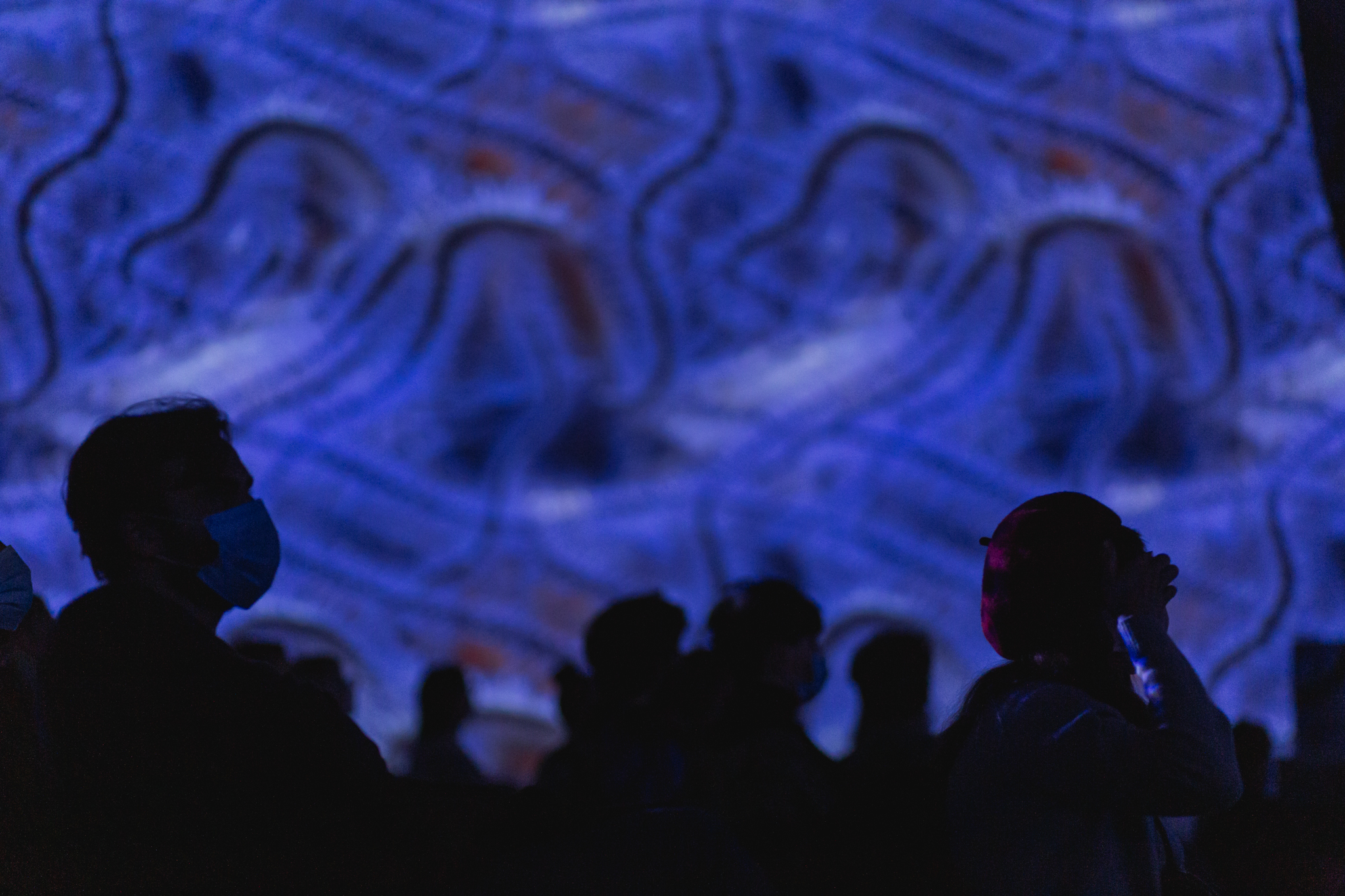
AQUA(I)FORMINGS – INTERWEAVING THE SUBAQUEOUS
Artist: Robertina Šebjanič, Sofia Crespo and Feileacan McCormick
Consultancy: dr.Matjaž Ličer
Mechanical part development: ScenArt, Ljubljana
Special thanks: Anja Zver, Alan Ixba, Manja Rogelja & Aquarium Piran, Marko Vivoda, Rok Pahor and Borut Jerman
Production: PiNA 2021, RUK
Post Production: Kino Šiška, Zavod Sektor

photo by Nejc Ketis/Kino Šiška

photo by Nejc Ketis/Kino Šiška
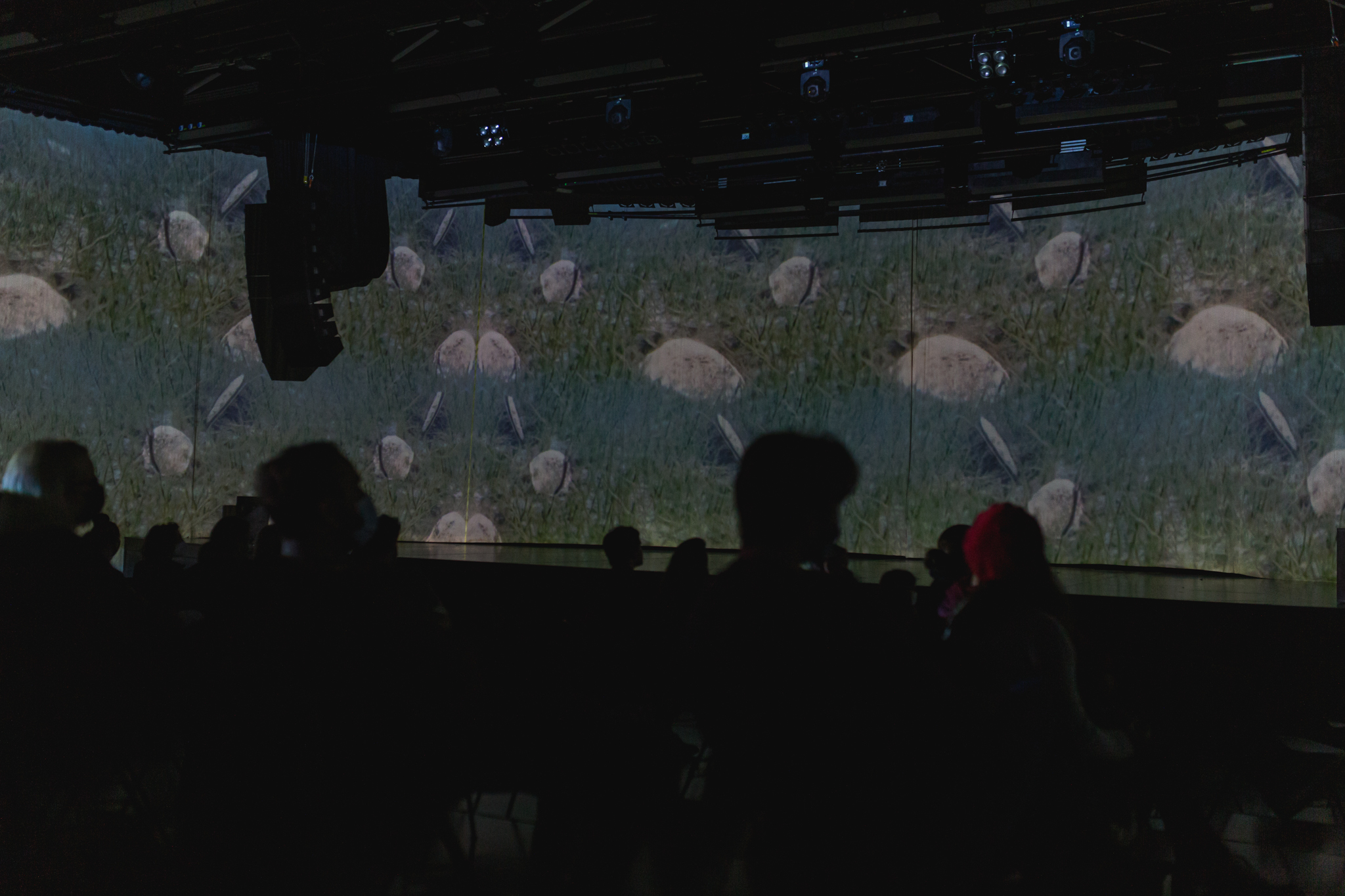
photo by Nejc Ketis/Kino Šiška
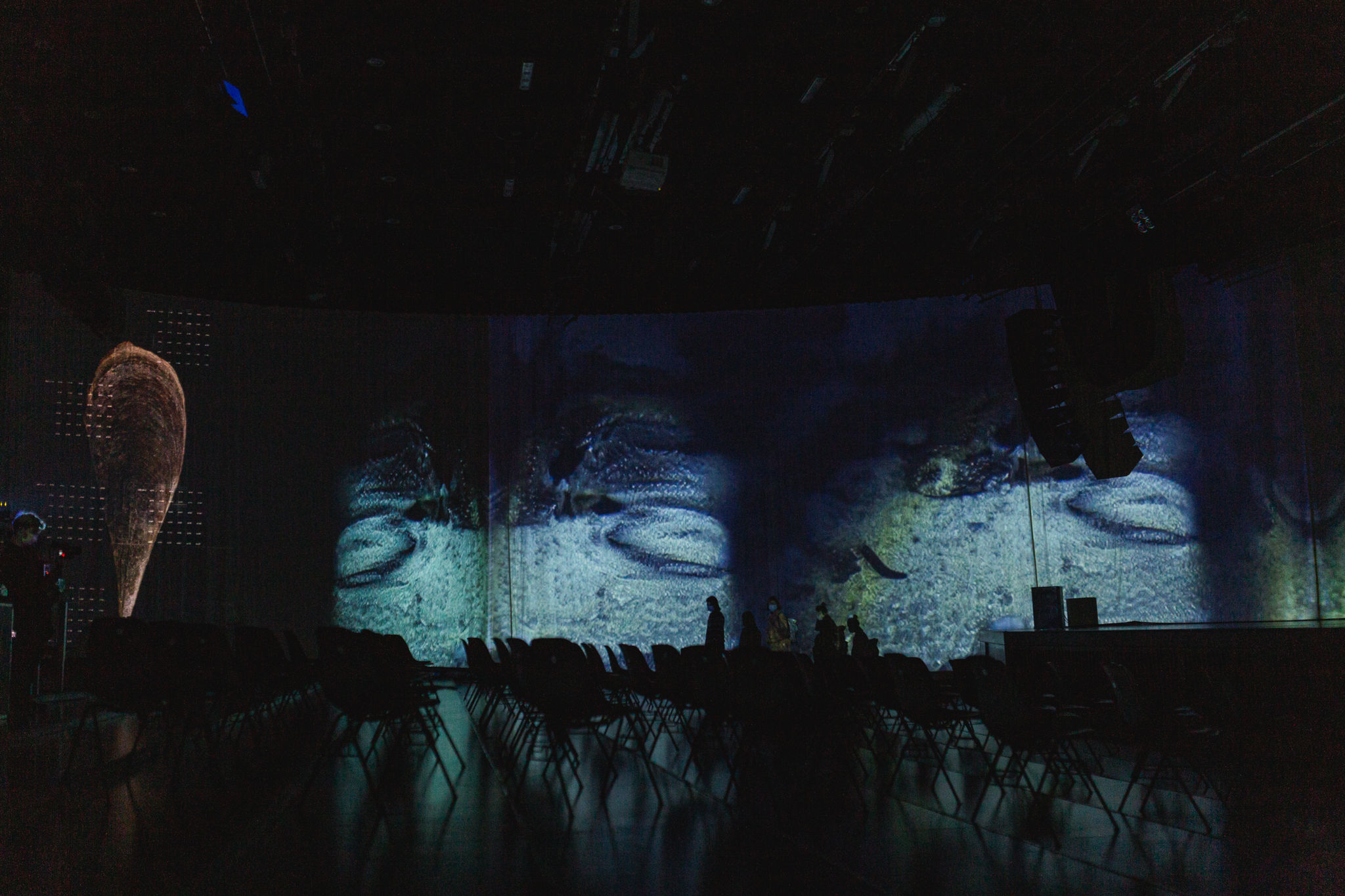
photo by Nejc Ketis/Kino Šiška
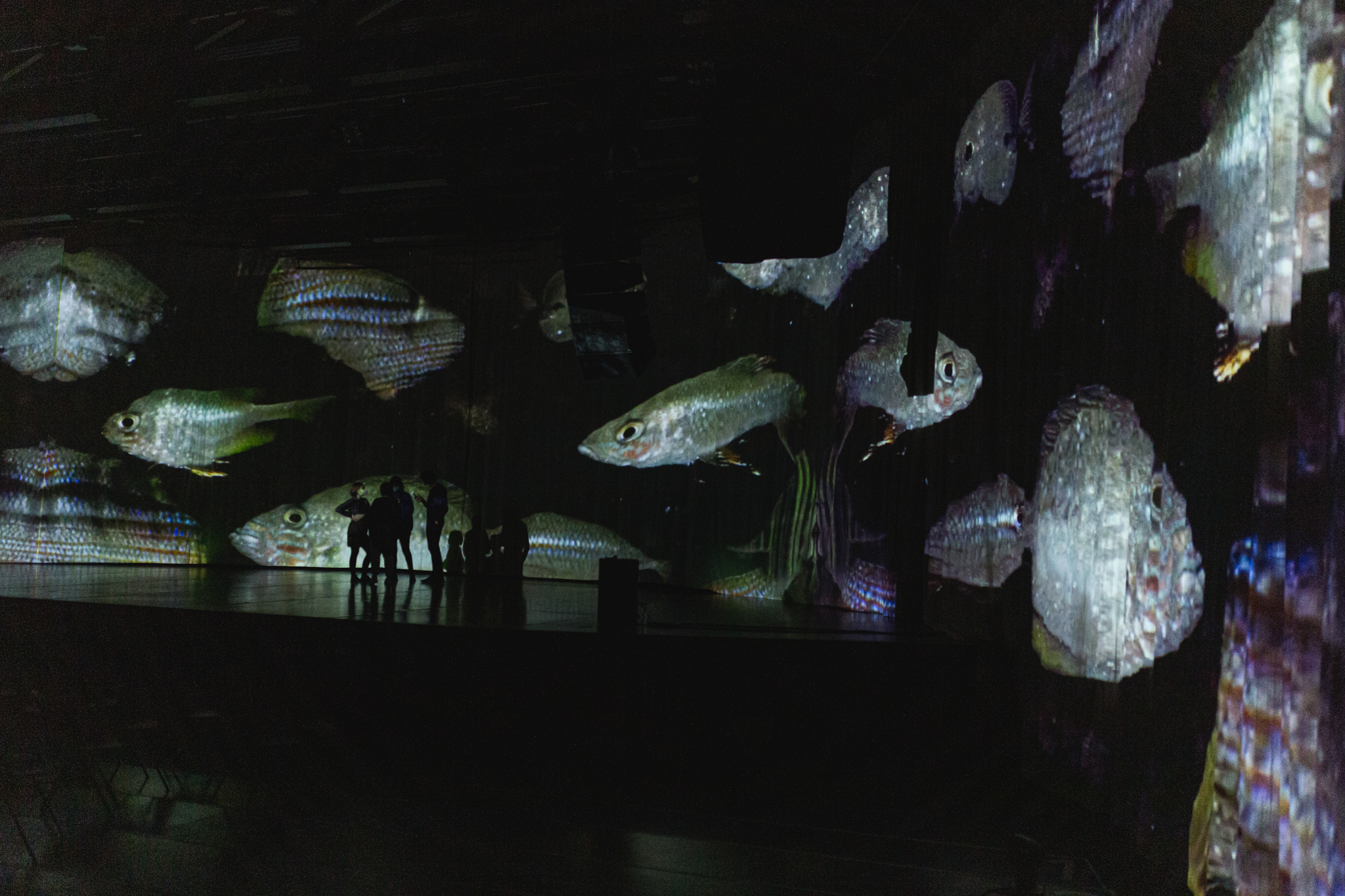
photo by Nejc Ketis/Kino Šiška
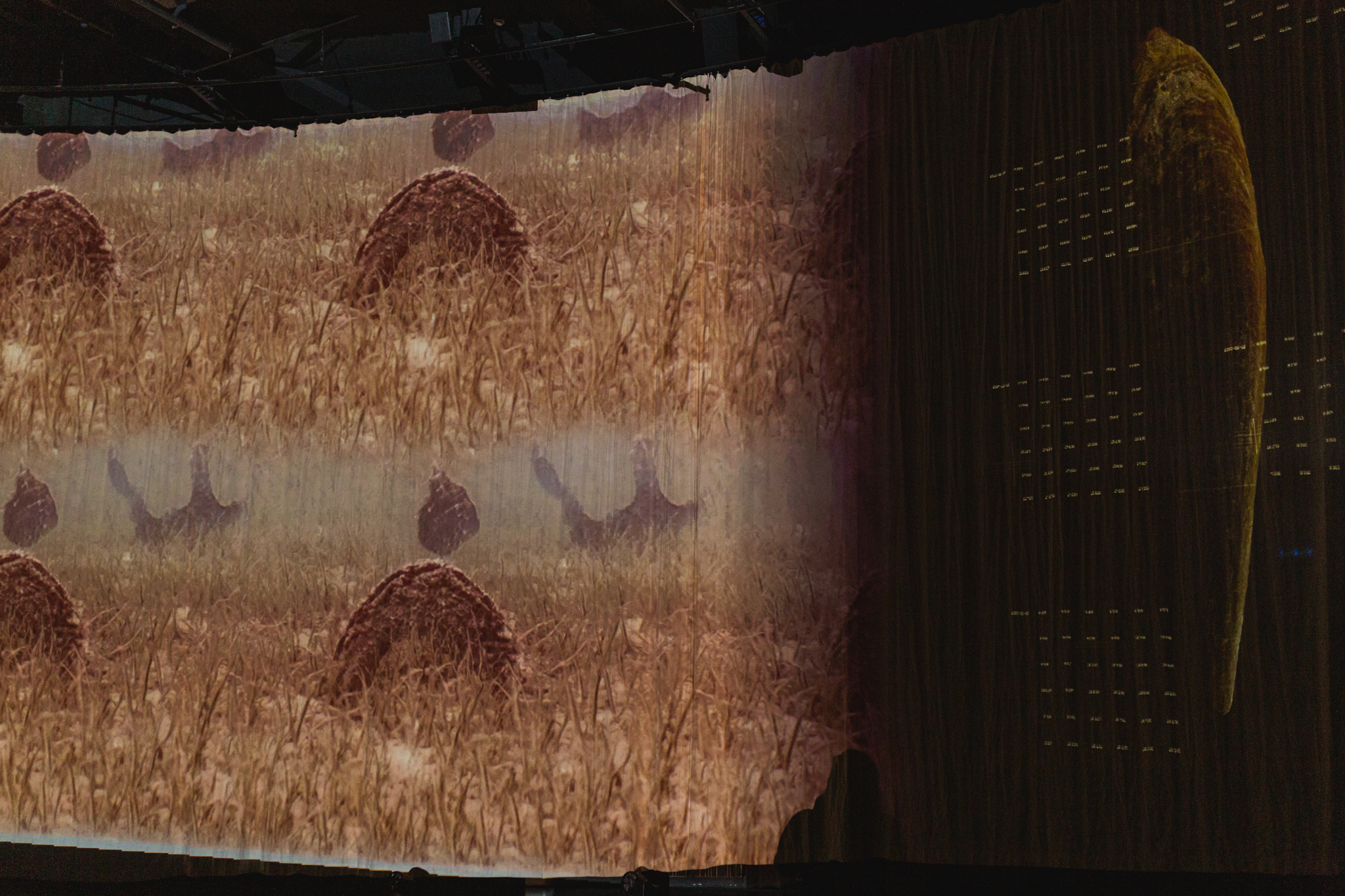
photo by Nejc Ketis/Kino Šiška
https://www.instagram.com/p/CU416Y9IUP1/
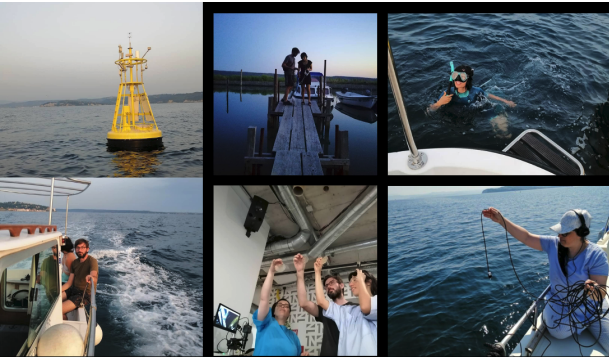
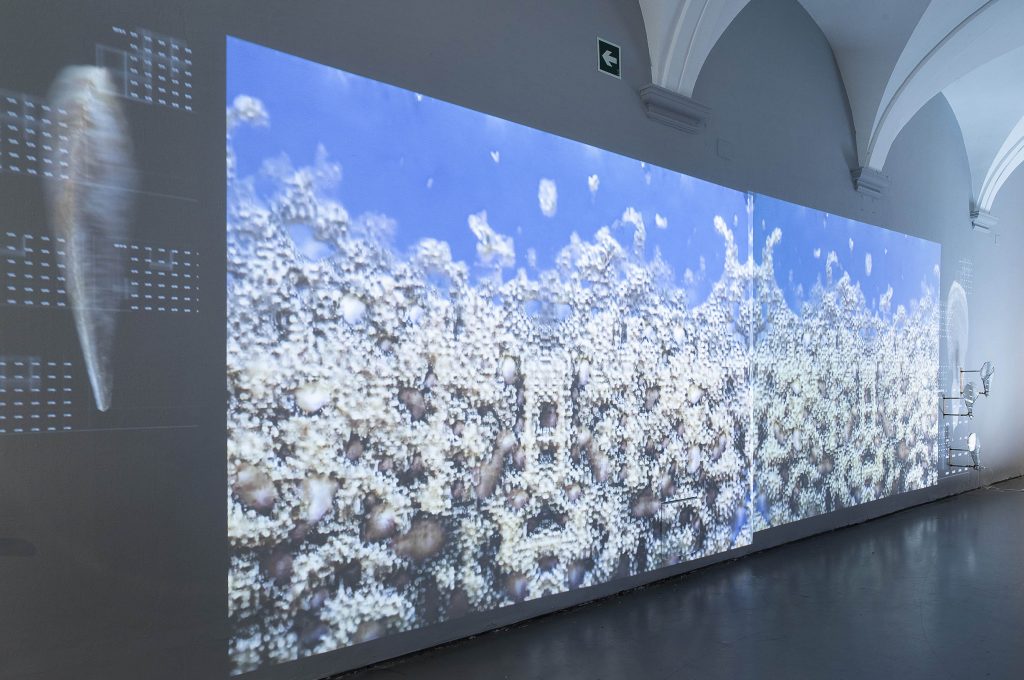
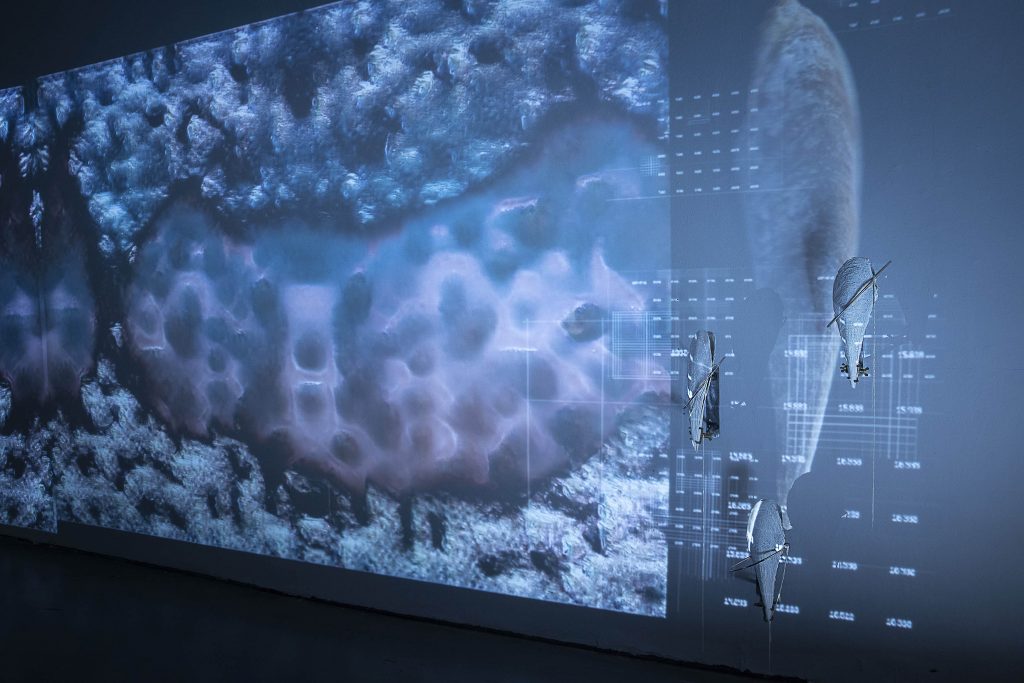
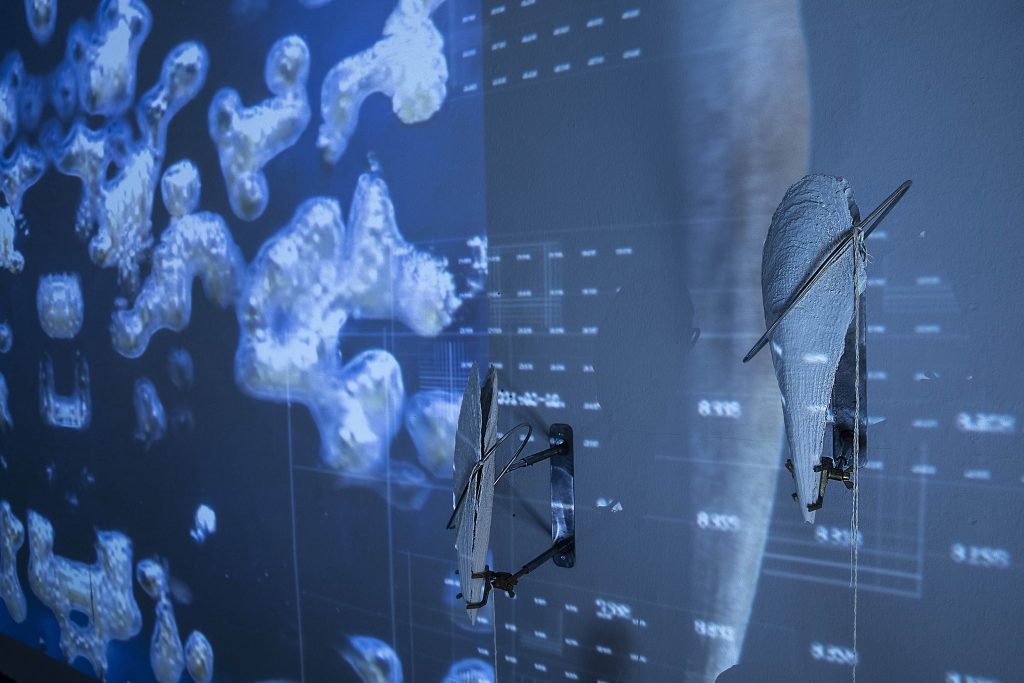
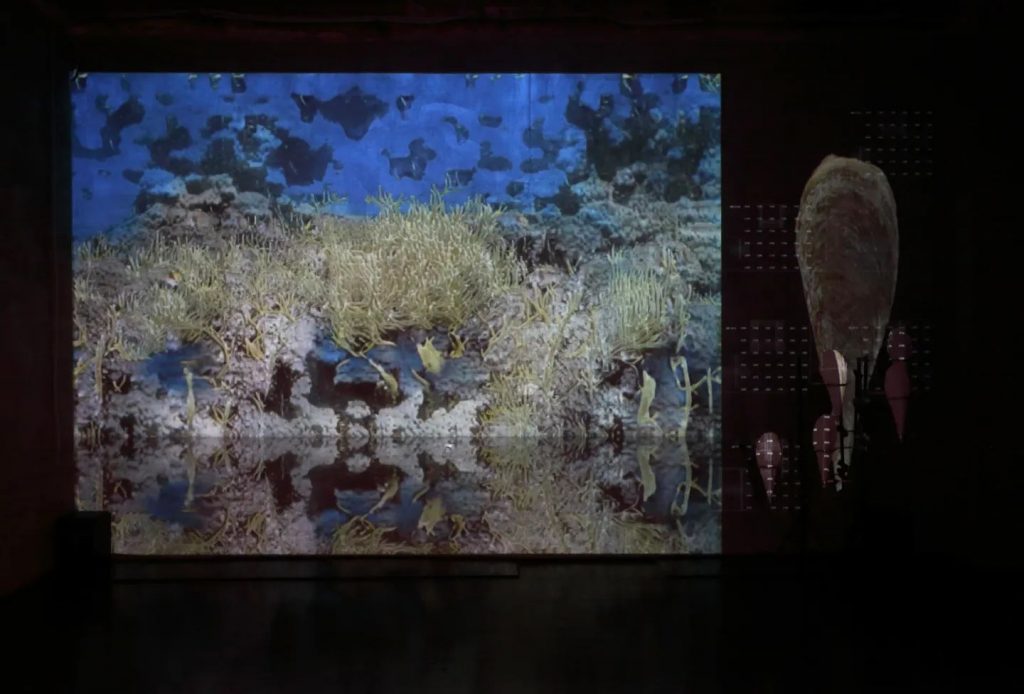
Helena Nikonole.
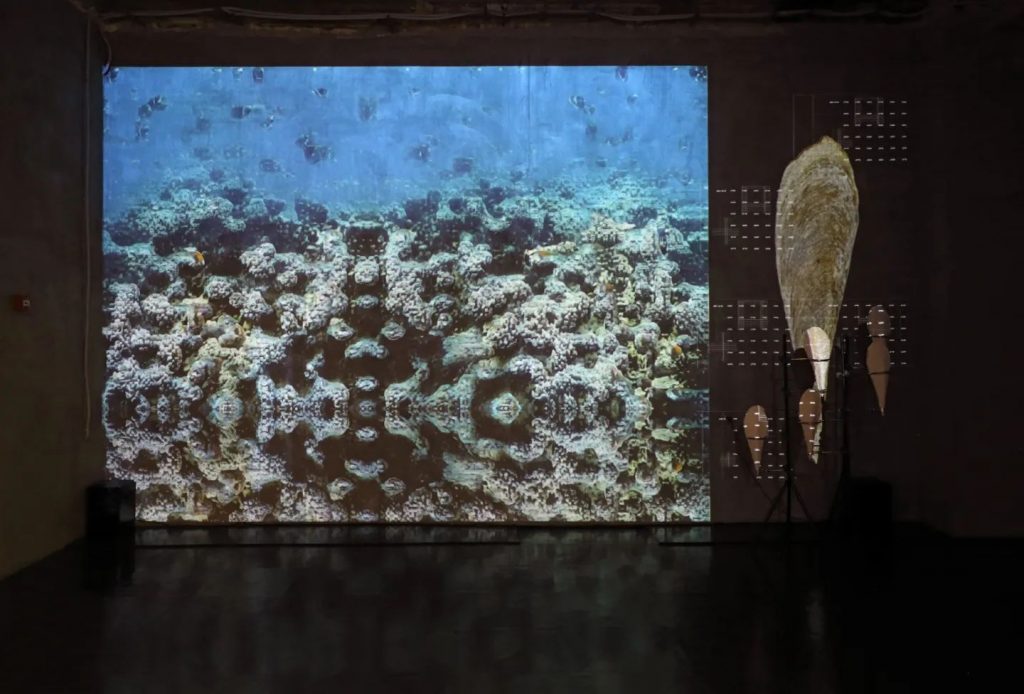
Helena Nikonole.
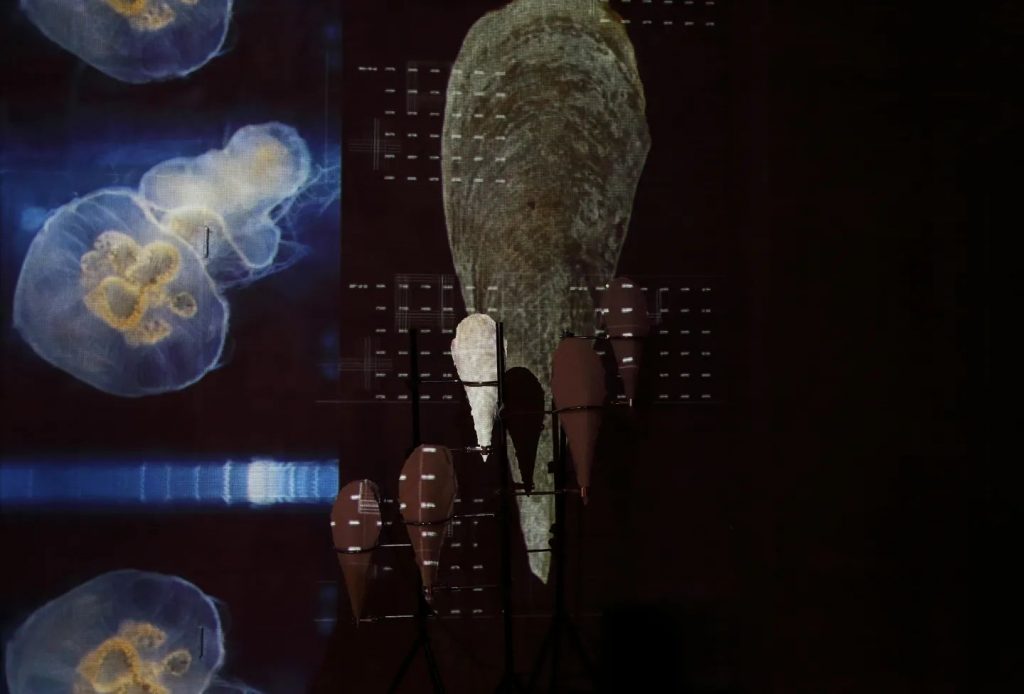
Helena Nikonole.

AquA(l)formings – Podvodni preplet: Robertina Šebjanič, Sofia Crespo, Feileacan McCormick
AquA(l)formings s pripovedno-poetičnim razmislekom in podkrepljen s tehnologijo umetne inteligence (UI) naslavlja priložnost za empatičen medvrstni razvoj odnosov z več-kot-človeškimi bitji (t. i. more-than-human entities). Raziskuje obsežne spremembe v morskem okolju, ki jih povzroča človeška prisotnost, in poskuša zamisliti, kako se na njegovih prebivalcih odražajo nove razmere (dvig morske gladine in temperature vode, nova kemična sestava, …). Morja in oceani takšne okoljske spremembe v biološkem ali geološkem času beležijo kot spomine bodisi znotraj posameznih organizmov ali kot izrazite premike v ekosistemskih strukturah.
V teoretičnem jedru projekta se umetniki naslanjajo na spise Donne Haraway, natančneje na njena najnovejša besedila o tentakularnem mišljenju (t. i. tentacular thinking, Tentacular Thinking: Anthropocene, Capitalocene, Chthulucene, e-flux journal #75, september 2016). Tentakularno mišljenje je, preprosto rečeno, sposobnost zaznavanja sveta z dotikom, občutenjem in preizkušanjem stvari. Človek bi jo lahko uporabil za pridobivanje novega znanja, razumevanja in izkušenj Drugega in neznanega. V tem oziru avtorji v prvi raziskovalni fazi projekta k reševanju in analizi vprašanj pristopajo z različnih perspektiv, npr. s stališča ideje o vseobsegajočem razpadu v naslednjo edinstvenost/singularnost, kjer meja med našimi izkušnjami in Drugim ne bo več definirana. Za lažjo predstavo o takšni in podobnih idejah, ki bazirajo na vizijah z vidikov nepoznanih prihodnosti, projekt AquA(I)formings poseže po uporabi tehnologije UI.
Avtorji v nastajajočem projektu sledijo »svilnatim« nitkam (t. i. bisusi, ang. byssus thread) velikega leščurja (Pinna nobilis) in ga vzamejo tako za vizualni sinonim Drugega kot za individualnega morskega prebivalca, ki je in še zbuja radovednost znanstvenih ter umetniških raziskovalcev morskih habitatov, obmorskih prebivalcev in starodavnih trgovcev z blagom. Danes pa je veliki leščur podlegel bolezni, ki je posledica okoljskih sprememb.
Z vključevanjem zgodbe velikega leščurja so avtorji projektu nastavili izhodišča tudi za raziskovanje uporabe in razvoja novih bioloških materialov, ki ne posegajo invazivno v habitate izbranih organizmov in tudi ne v njihov splošen obstoj.
Poseg po tehnologijah UI pripomore k izmišljanju predstav o prihodnosti npr. velikega leščurja in obširnih podmorskih travnikov morske trave Posidonia oceanica v severnem Jadranskem morju. Z uporabo UI tehnologij v večplastnih načinih umetniškega delovanja v projektu AquA(I)formings si avtorji postavljajo nekaj etičnih vprašanj: Ali je UI kot umetniška praksa primerna za in omogoča premostitev vrzeli med človekom in drugimi vrstami na način, ki ga človek doslej ni zmogel sam? Ali uporaba UI vpliva na naš izkušen pogled na naravo?
S projektom AquA(I)formings so avtorji obsežno raziskovali ta in druga vprašanja ter čutne izkušnje, ki jih z njim ustvarjajo, ter povezali svoje raziskave s severnim Jadranskim morjem in tamkajšnjim morskim življenjem.
AQUA(I)FORMINGS – PODVODNI PREPLET
Umetniki: Robertina Šebjanič,Sofia Crespo, Feileacan McCormick
Svetovalci: dr. Matjaž Ličer
Razvoj mehanskih delov: Scenart, Ljubljana
Zahvala: Anja Zver, Alan Ixba, dr. Manja Rogelja & Aquarium Piran, Marko Vivoda, Rok Pahor and Borut Jerman
Produkcija2021: PiNA
Postprodukcija 2021: Kino Šiška, Sektor